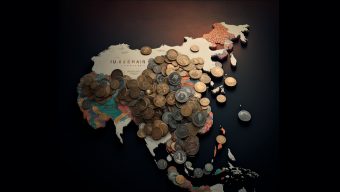Henry Ford once said, “If I had asked people what they wanted, they would have said faster horses.” To find out what customers want, so that we can tell them about products or services that can solve their problems, we need to be in contact with them. Traditionally, the contact person was a trusted figure such as a merchant or salesperson.
You may be picturing the typical “creative” traveling salesman who goes door to door with a collection of samples—like Del Griffith, the character played by the late John Candy in Planes, Trains and Automobiles, who sold shower-curtain rings by claiming that they were actually high-fashion earrings.
In the sales process, words and individual contact work because what we are looking for, essentially, is trust.
Individual contact
Are salespeople just charlatans who chatter nonstop so we won’t realize we’re being swindled? Are influencing and convincing the same as lying and manipulating? We still associate salespeople with these concepts and think of them in these terms. However, in the sales process, words and individual contact work because what we are looking for, essentially, is trust. That’s what selling is all about: businesses, customers, and building trust. Del Griffith built trust by identifying the needs of his potential customers. But he was also able to make them see what others could not—to look beyond the product and think about how the item in question could create value. This creativity is important in any business or industry, but in today’s world it is especially important for solving problems and generating alternatives.
The quaint sales process mastered by Del Griffith has worked for books, cosmetics, and many other products. The quintessential example of the door-to-door salesman is Willy Loman, protagonist of Arthur Miller’s 1949 play Death of a Salesman. Even today, in-home demonstrations of products such as Thermomix and Mary Kay cosmetics are commonplace, and have given rise to latter-day variations like Tuppersex parties.
The Apple fanboys of the 21st century are the grandchildren of the Avon fangirls of the mid-20th century, which shows that this model remains a good example to follow.
From door-to-door to fan
The concept of door-to-door sales can be traced back to 1851, when the American sewing-machine entrepreneur Isaac Singer decided to visit potential customers in their homes and show them how the machine worked.1 A few years later, a young farmer-turned-bookseller named David H. McConnell decided to give away free bottles of artisanal perfume to anyone who bought his wares. McConnell soon realized that the perfumes were a bigger hit than the books themselves. In 1886, he founded the California Perfume Company, a small business that sold fragrances door to door, and in 1929 he created a line of products called Avon. The brand became immensely popular, prompting McConnell to change the company’s name. Today, Avon is the largest cosmetics firm the world has ever seen.
In a sense, the Apple fanboys of the 21st century are the grandchildren of the Avon fangirls of the mid-20th century, which shows that this model remains a good example to follow. The impact of the model depends on many variables—the type of product offered, the overall health of the economy, etc.—but the salespeople themselves are ultimately the most important factor.
1 Mir Piqueras, J. B.: La venta domiciliaria: del puerta a puerta al multinivel. Díez de Santos, 1994.
© IE Insights.











